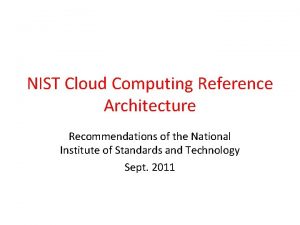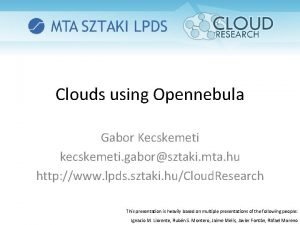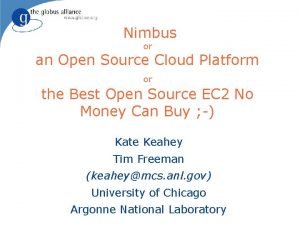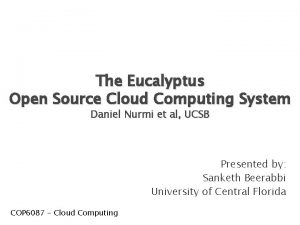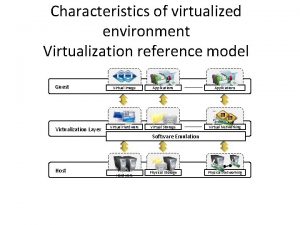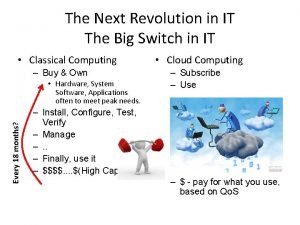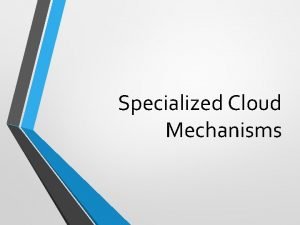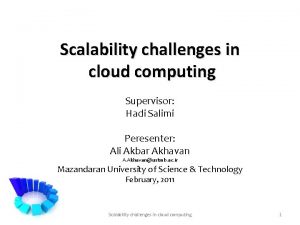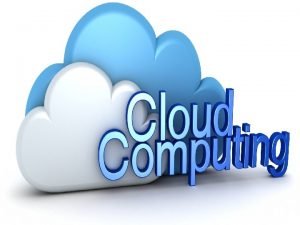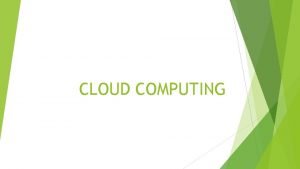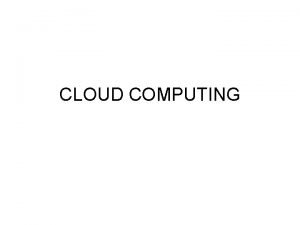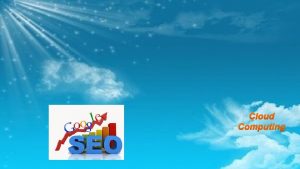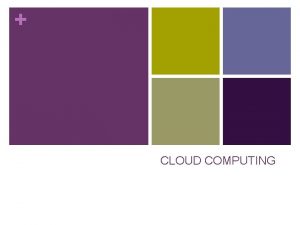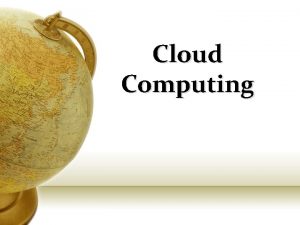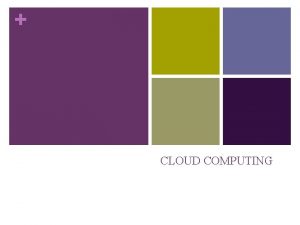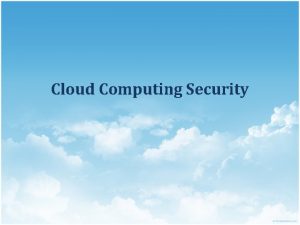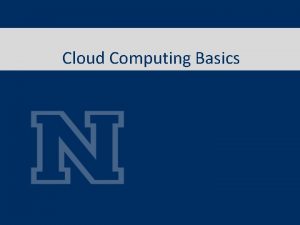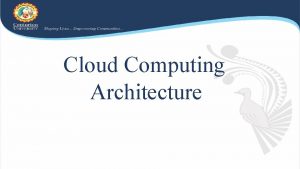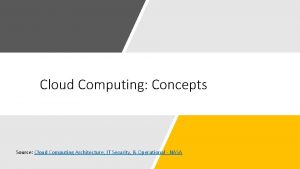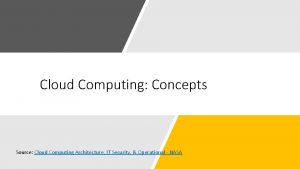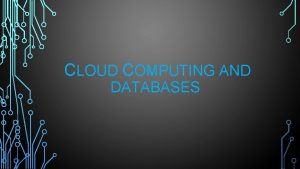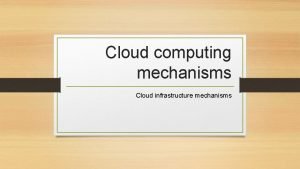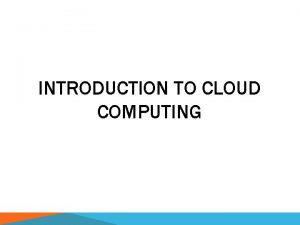Cloud Architecture Characteristics of Cloud Computing The Industry



















- Slides: 19

Cloud Architecture

Characteristics of Cloud Computing


The Industry Focus is on….





Cloud Services The term services in cloud computing is the concept of being able to use reusable, fine-grained components across a vendor’s network. This is widely known as “as a service. ” Offerings with as a service as a suffix include traits like the following: • Low barriers to entry, making them available to small businesses • Large scalability • Multitenancy, which allows resources to be shared by many users • Device independence, which allows users to access the systems on different hardware

Cloud Services Software as a Service (Saa. S) is the model in which an application is hosted as a service to customers who access it via the Internet, web browser or program interface.

Cloud Services Software as a Service ØIt is mainly accessed through a web portal and service oriented architectures based on web service technologies ØCosts ØOn can be sort of a double-edged sword. the one hand, costs for accessing the software can be an ongoing thing. Rather than pay for it once and be done with it, the more you use it, the more you’ll be billed. ØOn the other hand, in some cases you don’t have to pay as much up front and you are only billed based on

Cloud Services Software as a Service Customers who are not inclined to perform software development but have need of high-powered applications can also benefit from Saa. S. Some of these applications include • Customer resource management (CRM) • Video conferencing • IT service management • Accounting • Web analytics • Web content management

Cloud Services Software as a Service

Cloud Services Software as a Service ØSaa. S applications differ from earlier distributed computing solutions in that Saa. S was developed specifically to use web tools, like the browser. ØThis makes them web-native. It was also built with a multitenant back end in mind, which enables multiple customers to use an application. ØSaa. S provides network-based access to commercially available software. Since the software is managed at a central location, customers can access their applications wherever they have web access.

Software as a Service Benefits: ØOne of the biggest benefits of Saa. S is, of course, costing less money than buying the application outright. ØThe service provider can offer cheaper, more reliable applications than organizations can by themselves. Some other benefits include the following: • Familiarity with the World Wide Web ØMost workers have access to a computer and know how to use it on the World Wide Web. As such, the learning curve for using external applications can be much smaller. • Smaller staff ØIT systems require the overhead of salaries, benefits, insurance, and building space. The ability to

Software as a Service Benefits: • Customization Ø Saa. S applications are much easier to customize and can give an organization exactly what they want. • Better marketing A provider who had developed an application for a very narrow market might have had problems marketing that application. However, with Saa. S, the entire world is open to the providers. • Web reliability We talked earlier about how the World Wide Web can be seen as a source of failure. And while that is sporadically true, the fact of the matter is that the Web is generally quite reliable.

Software as a Service Benefits: • Security ØSecure Sockets Layer (SSL) is widely used and trusted. ØThis allows customers to reach their applications securely without having to employ complex backend configurations, like virtual private networks (VPNs). • More bandwidth ØBandwidth has increased greatly in recent months and quality of service improvements are helping data flow. ØThis will allow organizations to trust that they can access their applications with low latencies and

Software as a Service Obstacles: Like anything, Saa. S faces obstacles to its implementation and use. ØThe first is that an organization that has a very specific computational need might not be able to find the application available through Saa. S. ØIn that case, they may discover that they need to buy the software and install it on their local machines. That said, companies with unique needs may be able to find some of the components in a Saa. S.

Software as a Service Obstacles: ØThere is also an element of “lock-in” with vendors. That is, the customer might pay a provider to use an application, but once they do, they may be unable to port that application to a new vendor. Or, it might be possible to move to a new vendor, but the old vendor might charge a hefty moving fee. ØFinally, Saa. S also faces challenges from the availability of opensource applications and cheaper hardware. If companies are so inclined, they can put their open source applications on hardware that performs better
 Seven step model of migration into cloud
Seven step model of migration into cloud What is cloud computing reference architecture
What is cloud computing reference architecture Opennebula architecture
Opennebula architecture Nimbus architecture in cloud computing
Nimbus architecture in cloud computing Globus toolkit architecture in cloud computing
Globus toolkit architecture in cloud computing Eucalyptus open source
Eucalyptus open source Green cloud computing architecture
Green cloud computing architecture Characteristics of virtualization in cloud computing
Characteristics of virtualization in cloud computing Conventional computing and intelligent computing
Conventional computing and intelligent computing Vodafone ghana backup
Vodafone ghana backup Virtualization techniques in cloud computing
Virtualization techniques in cloud computing Virtualization
Virtualization Altostratus definition
Altostratus definition Cloud computing reference model
Cloud computing reference model Ardcs
Ardcs Explain system models for distributed and cloud computing
Explain system models for distributed and cloud computing Pay-per-use monitor
Pay-per-use monitor Seminar on green computing
Seminar on green computing Scalability issues in cloud computing
Scalability issues in cloud computing Conclusion of cloud computing
Conclusion of cloud computing

